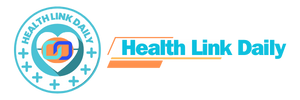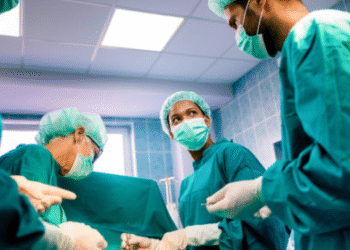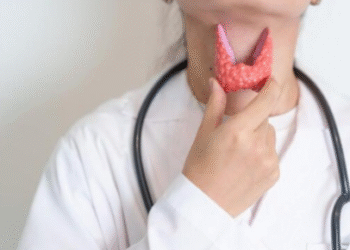Remote Patient Monitoring (RPM) is transforming healthcare delivery globally, and the impact on veteran care is particularly noteworthy. The U.S. Department of Veterans Affairs (VA) has embraced this technology to meet the unique healthcare needs of veterans, seeking to provide timely, convenient, and high-quality medical services. By integrating RPM into veterans’ healthcare strategies, essential gaps in care access are being bridged, facilitating smoother, more responsive medical interactions.
Enhancing Accessibility and Convenience
For many veterans, physical access to healthcare facilities can present significant challenges. Proximity to a VA hospital is only a given for some veterans, and traveling long distances can be both time-consuming and physically taxing, particularly for those with mobility issues or chronic illnesses. RPM mitigates these challenges by enabling healthcare providers to monitor patients’ conditions remotely. This virtual bridge allows veterans to receive continuous care and support from the comfort of their homes, promoting accessibility and convenience.
The convenience of RPM is critical as it significantly reduces the need for in-person appointments. Veterans with RPM devices can transmit vital health data such as blood pressure, heart rate, glucose levels, and more to their healthcare providers. This ensures that medical professionals can promptly assess and respond to emerging health issues without requiring the veteran to be physically present at a medical facility.
Improving Chronic Disease Management
Many veterans face chronic health issues ranging from diabetes and heart disease to pulmonary conditions and mental health disorders. Managing these conditions effectively is vital to enhancing their quality of life and preventing complications. RPM facilitates continuous monitoring, which is crucial in chronic disease management.
With RPM, healthcare providers receive real-time data, allowing them to make informed decisions about a patient’s treatment plan. The immediacy of this data exchange eliminates the lag time between doctor visits, thereby enabling a proactive approach to care. Adjustments to medication or lifestyle recommendations can be made swiftly based on the patient’s current health data, reducing the likelihood of hospital readmissions or emergency interventions.
Personalized and Proactive Care
VA Remote Patient Monitoring supports personalized care plans tailored to veterans’ health needs. This customized approach is particularly beneficial for veterans who often face complex medical challenges and co-morbid conditions. RPM devices can be calibrated to track specific health metrics relevant to an individual, allowing healthcare providers to focus on the areas of most significant concern.
Furthermore, RPM enables a more proactive approach to healthcare, moving away from reactive models. The continuous flow of health data allows providers to identify trends or early warning signs of potential health issues, enabling intervention before conditions worsen. This proactive strategy enhances patient outcomes and fosters security and confidence in the care received.
Facilitating Mental Health Support
Mental health is a critical component of overall well-being, and many veterans face mental health challenges due to their unique experiences. RPM offers opportunities for improving mental health support by integrating technology that monitors mood or triggers virtual check-ins with mental health professionals.
For example, mobile applications connected to RPM systems can regularly prompt veterans to assess their mental state through structured questionnaires or other assessment tools. If potential concerns are detected, alerts can be sent to healthcare providers who can initiate contact and offer support. This immediate response mechanism can be lifesaving, especially in cases where veterans may be at risk of severe depression or other mental health crises.
Cost-Effectiveness
Cost is often a prohibitive factor in healthcare, and the VA’s designation of RPM presents a more cost-effective solution for the healthcare system and veterans. By maximizing remote technologies, the VA can reduce operational costs associated with in-person care, such as facility maintenance and staffing.
For veterans, RPM significantly reduces financial burdens by decreasing travel expenses for frequent hospital visits and minimizing out-of-pocket costs for emergency care. Early detection and continuous monitoring can prevent health issues from escalating into more severe conditions, reducing the overall cost of care.
Overcoming Technological Barriers
Despite its benefits, implementing RPM is challenging, mainly because of the technological barriers experienced by some veterans. Issues such as inadequate internet connectivity or familiarity with technology can hinder RPM’s competitiveness. The VA addresses these concerns by providing training and support to ensure veterans can efficiently use their RPM devices. Additionally, efforts to enhance internet accessibility in rural and under-served areas are crucial to maximizing the reach and impact of RPM services.
Strengthening Communication and Collaboration
Effectively bridging care gaps requires strong communication and collaboration between healthcare providers and patients. RPM promotes this by facilitating a steady flow of information, ensuring both parties are on the same page regarding the patient’s status. Veterans are empowered to take an active role in their healthcare journey, encouraged by regular feedback and interaction with their healthcare providers.
Moreover, RPM enables interdisciplinary collaboration among healthcare teams, ensuring comprehensive care plans that address the multifaceted health needs of veterans. Integrated systems allow providers from different specialties to access the same patient data, streamline communication, and develop coordinated care strategies.
Future Outlook and Innovations
The future of VA RPM looks promising as technological advancements continue to evolve. Increasingly sophisticated monitoring devices, the integration of wearable technology, and advancements in telehealth platforms all promise to enhance the quality of care provided to veterans. Continuous innovation in RPM improves the current healthcare landscape and ensures sustainable healthcare delivery models that can adapt to the ever-changing needs of veteran populations.
Conclusion VA Remote Patient Monitoring is essential in bridging gaps in veteran care access. It offers many benefits, including enhanced accessibility, personalized care, and improved chronic disease management. Platforms like DocVA further enhance these benefits by providing robust tools for effective communication and health monitoring. As technology evolves, the VA’s willingness to leverage RPM in its healthcare strategies will continue to play a pivotal role in ensuring veterans receive the high-quality care they deserve. By integrating solutions like DocVA, the VA can enhance the effectiveness of RPM, ultimately improving health outcomes for veterans across the nation.










